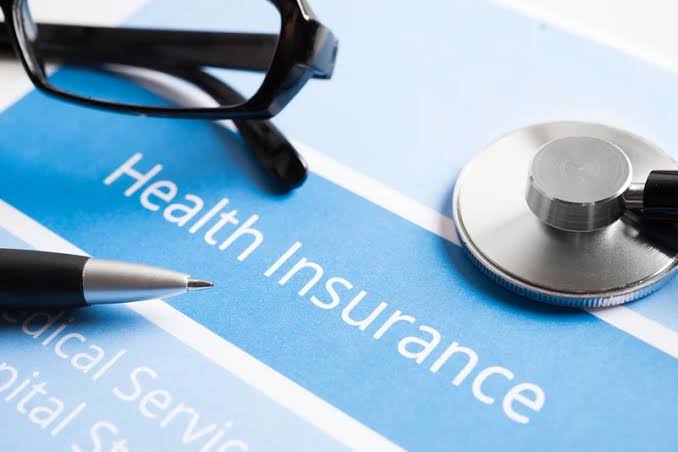Health
How to Claim Health Insurance in Case of an Emergency?

To claim health insurance during an emergency, notify your insurer immediately, provide necessary documents, and follow the claim process given in this guide.
Accidents and illnesses do not choose a time or place before affecting us. As such, the absence of a health insurance policy may lead to an unexpectedly high financial burden. Whether it is an accident, a sudden illness, or any other form of medical emergency, knowing the steps to claim your medical insurance policy can be of great help. In this blog, you will get all the information you require to know how to properly and swiftly make a claim on your health insurance in case of an emergency.
Importance of Understanding Your Health Insurance Policy
Knowing details about your health insurance policy well before any emergency is important. Understanding your policy can help you save time when it comes to filing a claim.
Key Components of Your Health Insurance Policy:
- Sum Insured: The maximum amount of money that the insurer will contribute towards the cost of the covered medica l expenses. This amount is crucial to know because it sets the maximum amount of your insurance claim.
- Coverage Details: It is important to know the details of your medical insurance policy, such as hospitalisation, operations, doctor visits, tests, and other related costs.
- Network Hospitals: Insurance companies also maintain a list of network hospitals where one can get cashless treatment. It is important to be familiar with these hospitals so that you can seek treatment in them in case of an emergency.
- Pre- and Post-hospitalisation: Most health insurance policies also reimburse for expenses incurred prior to hospitalisation and after discharge. It is important to learn the period for which this coverage is valid and the restrictions that come with it.
- Claim Procedure: Each policy provides information on the procedures to be followed when making a claim, especially in cases of an accident. It is always helpful to know these steps in advance to prevent delays during critical times.
Step-by-step Guide to Claiming Health Insurance in an Emergency
Here is a step-by-step procedure you can follow to claim your health insurance during an emergency:
- Immediate Medical Attention
In case of an emergency, the first thing you should do is to look for medical help. Whether it is driving to the nearest hospital or dialling the emergency services, it is important that the patient gets the attention needed as soon as possible.
- Admit to a Network Hospital
If the circumstances permit, it is better to be admitted to a network hospital that is associated with the insurance company. Network hospitals provide cashless treatment; that is, you do not have to pay the bills yourself, and the insurance company will pay the hospital directly.
- Notify Your Insurance Provider
As soon as possible, report the emergency to your insurance provider. Many insurers provide a helpline number for reporting claims, and it is mandatory to report the claims immediately. Delaying to inform the insurer may lead to rejection of the claim, or if accepted, may take longer time to process.
- Complete the Pre-authorisation Process
At the hospital, there is a form that you have to fill out at the hospital’s insurance desk, which is known as a pre-authorisation form. This form provides information about the patient, the nature of the emergency, and the estimated cost of treatment. This form will be forwarded to the insurance company by the hospital.
- Documentation and Submission
Along with the pre-authorisation form, you may need to provide additional documents such as:
- Health Insurance Policy Card: Documentation that the patient is enrolled in a particular plan.
- Identification Proof: A government issued photo ID to confirm the identity of the patient.
- Medical Reports and Prescriptions: These documents assist the insurer in determining the need for the treatment.
- Hospital Admission Notes: A letter from the hospital explaining why the patient was admitted and what the doctors intend to do for him/her.
It is advisable to have these documents and submit them to the authorities as early as possible so that the approval process is fast.
- Approval and Treatment
After the insurance company has gone through the pre-authorisation form and the other documents that the patient submits, they are likely to either approve or reject the request for cashless treatment. If approved, the treatment can go on without you being charged any amount of money at the beginning. However, there may be co-payment clauses or sub-limits in the policy, which means that you have to pay a certain amount for the expenses.
- Reimbursement Claims (Non-Network Hospitals)
Sometimes, you may be admitted to a non-network hospital, or your cashless claim may be rejected. In such cases, you will have to use your own money to meet the bills and then seek an expense reimbursement. The following documents are typically required for a reimbursement claim:
- Original Hospital Bills: These should include a detailed breakdown of the charges.
- Discharge Summary: A summary of the treatment that the patient has received, which is given to the patient at the time of discharge from the hospital.
- Diagnostic Reports: All the tests, imaging, or other procedures that are done in the course of treatment.
- Reimbursement Claim Form: This form is obtained from your insurer and has to be completed and attached to the other documents. Ensure that you retain original copies of all the documents and ensure that you submit them before the due date set by your insurer.
- Post-claim Follow-up
Once you have filed your claim, it is advisable that you keep on following up with your insurance company on the progress of your claim. Some of the insurers may ask for more information or clarification, and therefore, one should be willing to attend to their needs. It is important to keep copies of all communications for future use.
Additional Tips for a Smooth Claim Process
- It is advisable to write down your health insurance policy number, helpline number, and a list of network hospitals somewhere where you can easily find them, like on your phone.
- Ensure that your family members are well informed of the claim process, especially if they have to make a claim on your behalf in case of an emergency.
- There may be some conditions under which the health insurance policywill not pay for the treatment, known as the policy’s exclusions. Knowing these can assist you in preventing unpleasant shocks when it comes to the claim process.
Conclusion
Dealing with a medical crisis is never easy, but knowing all the ins and outs of how to go about filing a claim for your health insurance can make it a little easier. By reading through this guide and making sure that you understand your health insurance policy, you can concentrate on the most important thing, which is getting the right medical attention you need. In this way, you can ensure that your medical insurance policy is a good safety net when you need it.
-

 Festivals & Events4 weeks ago
Festivals & Events4 weeks agoList of March National Days for Small Business Marketing to Boost Your Brand
-

 Business2 weeks ago
Business2 weeks agoNayef Doleh Examines International Humanitarian Fundraising Strategies
-

 Business3 weeks ago
Business3 weeks agoHow Black Banx is Redefining Global Banking Strategies in 2025
-

 Tech3 weeks ago
Tech3 weeks agoMicrosoft Teams to End SMS Messaging Feature Support for Android Phones and Switch to Phone Link App as Alternative
-

 Tech4 weeks ago
Tech4 weeks agoHow to Switch Between Microsoft Teams and Skype, How To Export Messages, Files, and Contacts from Skype Before It Shutting Down
-

 Business4 weeks ago
Business4 weeks agoPurpose of the AIRdiamond Project
-

 Startup3 weeks ago
Startup3 weeks agoFrom Trends to Sales: How Small Businesses Can Capitalize and Maximum Reach on Social Media
-

 Education3 weeks ago
Education3 weeks agoSchool Of Odd Thinkers – Think Odd, Learn a lot, and Earn a lot





















